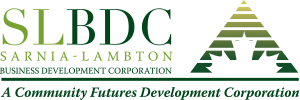
Workplace health and safety is an important topic that employers and employees should take seriously. It involves identifying and minimizing risks in the workplace to ensure the safety and well-being of everyone involved. If you have any specific questions or concerns about workplace health and safety, I recommend speaking with your employer or HR representative. Additionally, there are many resources available online that can provide information on best practices and regulations related to workplace health and safety.
As a small business owner, it’s important to prioritize workplace health and safety for your employees. Here are some key steps you can take to prevent workplace injuries and promote a safe work environment:
1. Conduct a risk assessment: Identify potential hazards in your workplace and take steps to minimize or eliminate them.
2. Develop a safety plan: Create a written safety plan that outlines policies and procedures for preventing injuries and responding to emergencies.
3. Provide training: Ensure that all employees are properly trained on safety procedures and know how to use equipment safely
4. Encourage reporting: Encourage employees to report any safety concerns or incidents, and investigate and address them promptly.
5. Maintain a safe work environment: Keep the workplace clean and well-maintained, and ensure that all equipment is in good working condition.
In terms of care, it’s important to have a plan in place for responding to injuries or illnesses that occur in the workplace. This may include having a first aid kit on hand, designating a trained first aid responder, and having a plan for contacting emergency services if needed. It’s also important to have workers’ compensation insurance to provide financial support for employees who are injured on the job.
The main goals of businesses and workplaces in the realm of health and safety, are to prevent injuries and accidents of all stakeholders attending the organization. A health and safety situation can be a very intense experience for all involved, so it’s best to be clear, at all times, on what the steps for reporting an event and to ensure that all key parties are familiar with what these processes are.
First, it is important to distinguish between an accident and an incident. An accident causes harm to a product, process, property, or person. What needs to be assessed here, is how the accident happened and preventing future alike accidents from occurring. An investigation is required to fulfill legal requirements such as submitting a report to the Ministry of Labour, Immigration, Training, Skills and Development or to process a claim through WSIB. An example of this is an employee not wearing fall protection while working on a roof slips and falls; like the situation discussed last week.
An incident is an event that could have resulted in an accident or otherwise known as a “near miss”. A reason to investigate an incident is, because if ignored, it can and will be repeated and have potentially more severe consequences the next time. Another reason is management needs to know where incidents lie and improve the process through appropriate reporting mechanisms to facilitate a healthy and safe environment. Documenting also maintains a burden of proof and tracks reoccurring incidents that indicate potential issues with current processes. An example of an incident is when an employee’s clothing gets caught in machinery but tears before there is an injury.
There are seven processes that should occur whenever there is a workplace incident or accident.
- First, call 911 if a critical injury or fatality occurs or if workplace violence breaks out. The employer or supervisor is responsible for ensuring emergency services are on their way immediately.
- Second is to administer first aid. This is responsibility of the closest person who has first aid training, until trained emergency services have arrived. If another person is in danger while administering first aid, then first aid should not be performed until emergency services personnel has attended the event; for example, if there are dangerous substances in the area. In Ontario, every workplace must have at least one employee with a valid first aid certificate, but more coverage can ensure all risks at work are mitigated in these situations.
- Thirdly, it is important to secure and manage the scene, ensuring that all employees are redirected from the area, and the area secured with a barrier of sorts, to ensure there is minimal disturbance from administering first aid.
- The fourth step is to notify all the required parties. It is important for the event to be recorded and severity will indicate how to proceed next.
- If it is an incident or near miss, this should be reported to a manager/supervisor or the JHSC.
- If an accident requires first aid, if noncritical, it should be reported to the acting manager/supervisor or to the JHSC.
- If an accident requires health care treatment, reduced hours, modified work, or lost time, it must be reported to manager/supervisor or the JHSC and WSIB.
- If the accident results in a fatality or critical injury, the employer has a duty to notify:
- JHSC
- Within 48 hrs an accident report must be submitted to the Ministry of Labour, Immigration, Training, Skills, and Development
- WSIB
- Union (if applicable)
- Police, although they will be automatically dispatched because of 911.
- Next is to investigate to determine how the incident/accident occurred, so proactive steps are taken to ensure it does not happen again by all respective parties mentioned earlier, simultaneously. These are completed by gathering evidence, interviewing witnesses, and investigating the root cause of the incident/accident.
- Once the investigations have all been completed, a final report is produced and shared with all parties.
This report entails:
- A detailed description of the incident/accident
- The harm/losses caused by the incident/accident
- The root cause of incident/accident
- Temporary/permanent controls implemented
- Recommendations to avoid similar incidents/accidents with detailed solutions for eliminating or controlling the incident/accident.
- Then steps and resources are identified to fulfill recommendations
- Finally, the implementation of recommendations is follow up and analyzed. It is the employer’s responsibility to act on these recommendations. Effective communication amongst all parties is an important part of the follow up process.
To avoid workplace incidents/accidents, effective training, support from management and a proactive health and safety program can ensure everyone’s healthy and safe at work.
For the next few weeks, we will focus on workplace health and safety, as we know that a healthy, safe workplace and success go hand and hand.
If you would like a consultation on how this article can be applied to your business, connect with us!
REFERENCES


